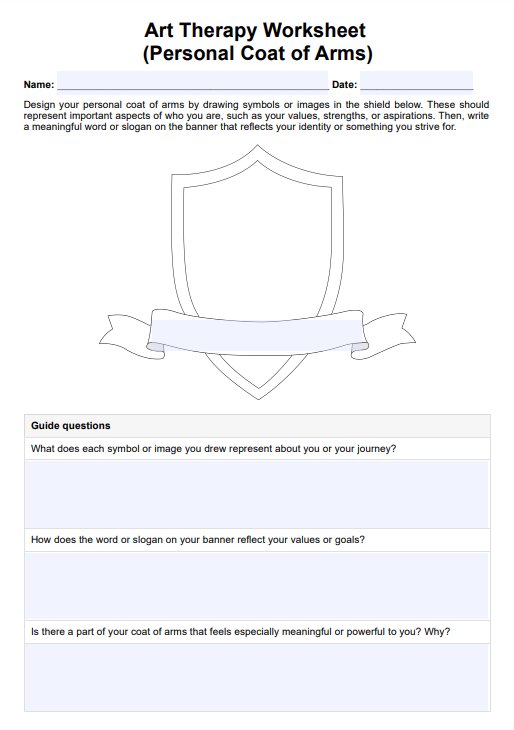That depends on who is engaging with it. Just give the client the time to finish it during your scheduled session.

Art Therapy Worksheet
Give your client a Personal Coat of Arms Art Therapy Worksheet so they can create symbols that represent themselves and/or their families.
Use Template
Art Therapy Worksheet Template
Commonly asked questions
It shouldn’t be. The difficulty will come from the client having trouble expressing themselves. If they choose to reveal something about themselves through the worksheet, they might have a hard time, so give them the space and time they need.
Yes. It serves as a fun exercise and a way to pass the time. But let them know that they mustn’t substitute it for therapy. If you’re doing this for therapeutic reasons, please contact a therapist.
EHR and practice management software
Get started for free
*No credit card required
Free
$0/usd
Unlimited clients
Telehealth
1GB of storage
Client portal text
Automated billing and online payments











